
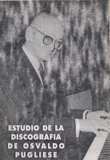
8 controversial recordings
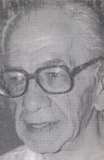
2. Recording details
3. Do they exist ?
4. Searching through modern CD editions.
N.N. - update
5. Conclusion
(enable JavaScript to play the sound samples)
 |
||
 |
8 controversial recordings |
 |
|
2. Recording details 3. Do they exist ? 4. Searching through modern CD editions. N.N. - update 5. Conclusion (enable JavaScript to play the sound samples) |
4. Searching through modern CD editions.
La Tupungatina
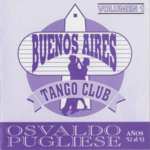 - "Osvaldo Pugliese 1952-53", Buenos Aires
Tango Club - Vol.1, 27-06-1952 acc. to the CD, ©1997
This case is unusual because the two versions differ considerably in length: the BATC version is approx. 3 1/2 minutes, on Reliquias it is 4 minutes. This difference is only partly explained by a slightly slower pace, half of it is caused by the insertion of an additional variation. In the sound sample, we take off at the bandoneon motive which follows the repetition of the main theme, at about 2:09 in the shorter version, at about 2:22 in the longer one. In the first version this is immediately followed by the second part of the counter theme (by the complete orchestra) after about 6 seconds, in the second version a violin variation intervenes, accompanied by the orchestra in marcado style, before continuing with the counter theme. |
Play
sound sample
![]() (252
K)
(252
K)
If we accept the BATC recording date, the Reliquias version should be the november version of that same year (in spite of the fact that Todo Tango presents it as the june version in its music selection). This seems logical as the recording also has a brighter sound. Remember that we are not just talking about 6 months difference in time, but also, as indicated by Oscar Del Priore, about a technology jump.
Mala Junta
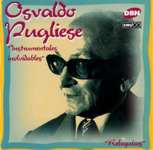 Here, definitely, two versions exist, but
one is clearly more popular than the other. e.g. on
For the other, which I believe is the 1952
version, I know only one source, the CD
Could the lack of popularity of the later
version be related to the strong reverb in the intro? First the intro to
the 1943 version, then 1952.
|
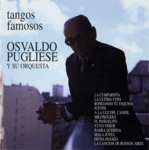 Apart from the introduction, the two versions show a striking difference: shortly after 1 min, the violin part in one version is replaced by a rhythmic bandoneon motive in the other. And yet, both versions, in their own way, follow the general layout of the first De Caro recording of 1927. In the corresponding section, De Caro plays the violin melody on a rhythmic background. In the 1943 version of Pugliese, the violin part gains in importance at the expense of the rhythmic background. In the 1952 version the violin is completely left out and the rhythmic background becomes foreground. What a change of perspective ! In the following sound sample you hear first De Caro, 1927, then Pugliese, 1943 and finally Pugliese, 1952, each about 15 seconds. Play
sound sample
The "1952" modification is the one which can be heard in the many live recordings of the eighties (Teatro Colón, Amsterdam, Nagoya,...). It is also the basis for the Color Tango version (1998). |
La Cachila
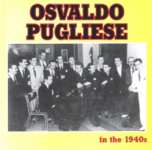 First:
And in the second group:
If the amount of non-Argentinean productions
troubles you, feel assured by the fact that EMI Odeon is represented in
each group.
|
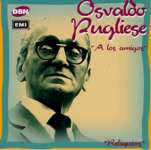 - A difference in sound quality in the second group, on its own this would be a weak argument as we do not know the reprocessing history of each edition - A noticeable slowing down in the piano intro, again, on its own I would be ready to accept this as a processing artefact, one way or another inherited from one edition to another - The final beats, however insignificant the detail may seem I consider this the most decisive (and correlated with the 2 other criteria). The piece ends with 5 strong beats and a rather weak final chord. In the second group, between the 1st and 2nd beat of this group a more complex rhythmic pattern can be observed. Less obvious because it is so weak, the final chord seems to be played on piano while in the first version it sounds as played by the whole orchestra. In the following sound sample you can hear the first 8 seconds (with the piano intro), immediately followed by the final 5 strong beats and closing chord (amplified 8 times). First the EMI-Reliquias version (indeed 1945, in my opinion) followed by the EMI-Hemisphere version, which I accept as 1952. Play
sound sample
|
Barro - La noche
que me esperes - Pasional
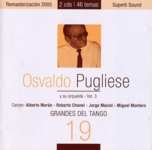 Barro
La Noche Que me Esperes
For Pasional the following editions are available (among others) : - "Osvaldo Pugliese - Sus Exitos Con Alberto
Moran", EMI-Reliquias, 31-07-1951 acc. to the CD, ©1996
|
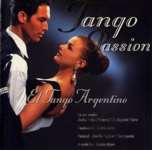 - "Osvaldo Pugliese Grandes exitos" EMI-Serie de oro, no recording date given, ©1999 This version differs by starting without the 8" rhythmic introduction, prominent in the other CD editions. Now THAT could have been an easy one in the "laboratory", at least to remove it. However, in spite of the identical arrangement of the main part, there are small differences indicating that one is not just a copy of the other. From the sound quality, I feel tempted to judge that the version without the rhythmic introduction is the original one (1951, as indicated by Disky) and that the rhythmic introduction was added in the 2nd recording (1952), implying that the year of recording given by Reliquias, Lantower and Blue Moon is not the correct one. In the following sound sample, you can hear a 27" fragment at the start of the "1951" edition (my claim) followed by the "1952" edition : the 8" introduction and the section corresponding to "1951" |
Play
sound sample
![]() (380
K)
(380
K)
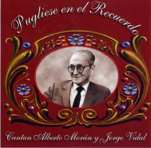 A warning: all these titles were recorded by Alberto Moran with other orchestras too (directed by Armando Cupo and Alberto Di Paulo). Magenta, the cheating label that never lies but always suggests the wrong things, has published "Barro" on a CD with the title "Pugliese en el Recuerdo", photo of the maestro included. But if you are really a Pugliese fan, they won't fool you, will they ? Right, this is Alberto Moran with Alberto Di Paulo in 1986.... (Observation: also Zivals lists this CD as a Pugliese CD, altough not a single track was recorded by the Pugliese orchestra) |
N.N.
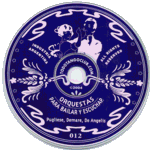 - "Osvaldo Pugliese - Instrumentales inolvidables
Vol.2", EMI-Reliquias, no date given, ©1999
- "Las Grandes Orquestas Del Tango: Osvaldo
Pugliese", Blue Moon, 1947 acc. to the CD, ©1999
I have put both Blue Moon editions separate from the others as they do start different, not just different, strikingly different. Let's listen. First the introduction as found on the Reliquias edition, followed by the intro of the Blue Moon edition. |
Play
sound sample
![]() (166
K)
(166
K)
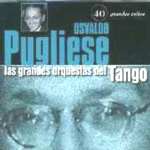 There is definitely something wrong with the Blue Moon version, somehow it just doesn't make sense as a start (although one seems to get used to if after listening a few times). I already apologize to leave now the musical experience and take up the scalpel, but in this context we must spend some time on this. I strongly believe that something went terribly wrong during the preparation of this track for the Blue Moon edition. Was it the needle wildly jumping around on a 78 rpm record ? Impossible to say now and here, but the introduction got severely messed up (hopefully, not intentionally). It is quite easy to reconstruct the Blue Moon version with bits and pieces from the Reliquias edition. Again the introduction from the Blue Moon edition (about 7"), followed by the corresponding part in my reconstruction... Play
sound sample
|
The following graph shows how it was done :
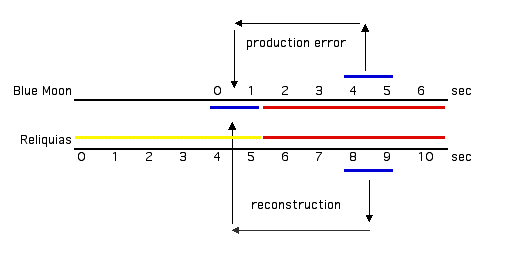
Is this the "laboratory" manipulation mentioned
by Lefcovich? Not likely: I think that Lefcovich wrote his comment long
before Blue Moon produced its CDs. Moreover, the Blue Moon version can
only be found on their own CDs, I haven't found yet another label wich
reproduces this version.
Most CDs claim they present the 1947 recording.
Only the Lantower edition claims 1952 but in my opinion it is just the
same.
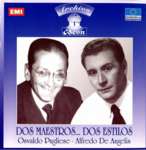 And now, finally, the second version of
N.N. has shown up. Earlier this year, EURO Records published in their Archivo
Odeon series a compilation volume dedicated to Osvaldo Pugliese and Alfredo
De Angelis : Dos Maestros - Dos Estilos (EU19011). On the CD cover, Carlos
Puente writes:
In the following sound sample you hear the new EURO Record version, followed by the Lantower version (erronuously claimed to be 1952), each about 15 seconds. At the very end of the first fragment you year a short low string glissando, absent in the other one. Play
sound sample
|
La Yumba
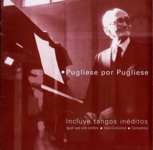 - "Osvaldo Pugliese: Colección",
EMI, no date given, ©1991
- "Osvaldo Pugliese - Instrumentales inolvidables
Vol.1", EMI-Reliquias, 21-08-1946 acc. to the CD, ©1997
Only the 1946 recording is explicitly mentioned. And yet... The versions on the more recent EMI editions (Reliquias, Pugliese por Pugliese & Ausencia) sound different. For the time being, I will refer to them as the "2nd version". The interjacent accents are more prominent and therefore the music sounds jumpier, although the main beats are identical and come at the same time. Play
sound sample
|
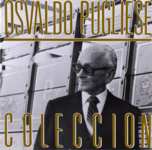 Play
sound sample
All the features that come out more clearly in the second version seem to be present in the other, just less prominent. Both versions are identical in arrangement and tempo, it is hard to find a difference which is really convincing. And yet they sound different... Ironically, for some time I found myself in the same position as Lefcovich. Would it be possible to process and enhance the sound in the first version to such a degree ? After all the second version has indeed that slightly metallic sound which is characteristic of reprocessing. If it is possible now, was it possible in the days when Lefcovich wrote his comment ? Why (and how) did EMI switch from one edition to another between 1993 and 1995 ? With the brighter sound (along the lines we have seen earlier), very small shifts in accents and once more, a small difference in the final beats (as already observed in "La Cachila") I feel now tempted to consider the "2nd version" indeed as a "2nd recording". But I will bow my head if someone demonstrates the "reprocessing" hypothesis. A good test would be the comparison with
the "La Yumba/N.N." record of 1952, as opposed to the "La Yumba/Mal de
Amores" of 1946. The existence of the 1952 record seems to be established:
I have heard it mention by Argentinean friends and it can also be inferred
from the discographical data in "Los Grandes del Tango".
|
For 5, very likely 6, of the 8 duplicados,
the
two versions can be found if we rely on our ears, not distracted by what
the editors write on their CD covers. The musical difference between the
two versions range from almost unnoticeable (as in "La Cachila" and possibly
"La Yumba"), very comparable arrangments ("N.N."), an added introduction
("Pasional"), changes in a small part ("Mala Junta") to the insertion of
a new fragment ("La Tupungatina)". But in no case, they can be considered
as new arrangements, not compareable to e.g. the reworking needed to adapt
the early De Caro style to the more dramatic style of the sixties. This
is in accordance with what Oscar Del Priore said: very likely the motive
for these recordings was not artistic but technological.
|
|
Nicolas Lefcovich 16-06-2006 (updated 08-2007) Part 1 |
|
|